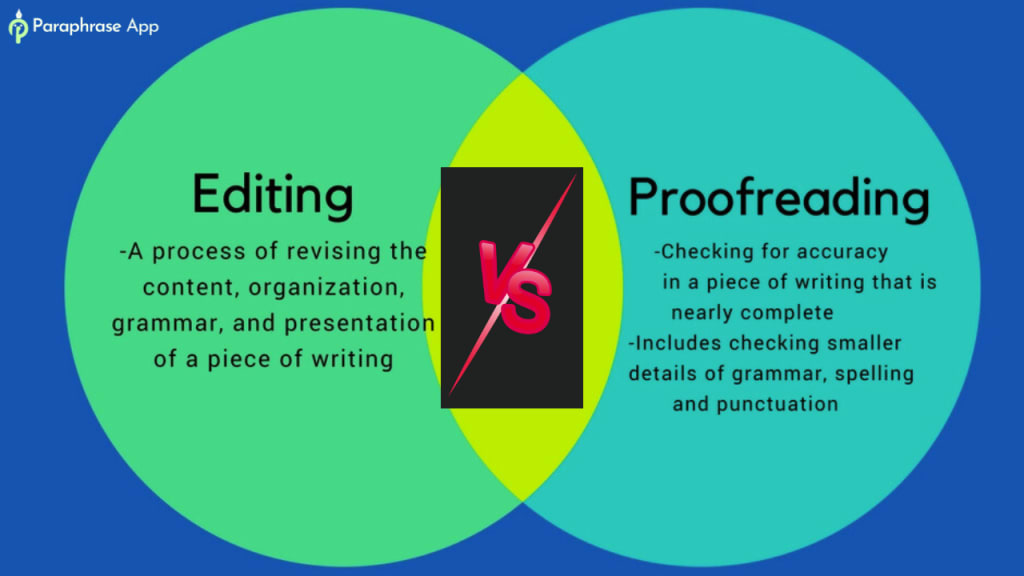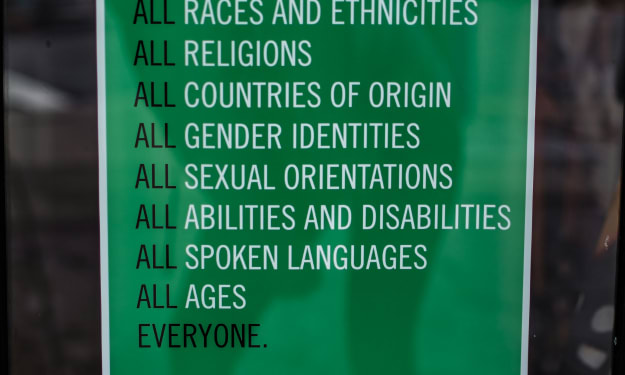Editing VS. Proofreading: Differences, and When to Use Each
Editing means assessing and revising a document's content, structure, style, etc. Proofreading involves repairing grammatical, syntax flaws.

Effective writing is a multi-step process that involves more than just putting words on paper. It involves optimizing your text to guarantee clarity, coherence, and accuracy. Editing and proofreading are two crucial phases in this process that are sometimes used interchangeably but have different goals.
Understanding the differences between editing and proofreading is important to creating polished, error-free writing.
In this article, we'll look at the differences between editing and proofreading, as well as when to use each skill.
Editing
Editing is the process of reviewing and polishing a written text to improve its overall quality, clarity, coherence, and effectiveness. It involves reviewing and revising a document's content, structure, style, and language to generate a refined and clear piece of writing. Essays, articles, reports, manuscripts, marketing copy, academic writing, and other written pieces can all benefit from editing.
Key aspects of editing:
- Content Analysis:
Editors evaluate the text's general flow and structure. They make sure that the information is logically arranged and that ideas are communicated clearly and cohesively. Editors correct holes in the argument or inconsistencies in the narrative throughout the editing process.
- Clarity and concision:
Editors aim to develop content that is clear, understandable, and reader friendly. They remove redundancy, jargon, and unclear statements to improve the readability and comprehension of the content.
Also Read: 9 Awesome Content Writing Ideas | All-Time Content Topics
- Style and language:
Editors may recommend changes to the writing style to better reflect the target audience and purpose of the document. Tone, voice, phrase structure, and word choice are all factors to consider.
- Grammar and Syntax:
Editors address grammatical errors, punctuation flaws, and sentence construction difficulties throughout the editing process. They guarantee that the work follows language standards.
- Fact-Checking:
Editors double-check the accuracy of facts, data, quotes, and references used in the work. They verify that the material is trustworthy and reliable.
- Formatting:
Editors may also handle formatting tasks such as maintaining uniform usage of headings, subheadings, citation styles, fonts, margins, and other document features, depending on the context.
Editors frequently offer criticism and ideas to authors to help them improve their writing abilities. These criticisms may include suggestions for structure adjustments, clarity improvements, and language improvements.
Example of editing
Original Text:
"I love to read, write and watching good movies are my passions."
Edited Text:
"I am passionate about reading and writing, and enjoying good movies."
In the edited version, several changes have been made to improve the sentence's clarity and cohesion.
Breakdown of the editing process:
1. Restructured the sentence to improve flow.
2. Changed "love to read" to "passionate about reading" to express more excitement.
3. Changed "watching good movies" to "enjoying good movies." for clarity and conciseness.
Proofreading
Proofreading is the final stage of reviewing a written document in order to find and correct grammar, spelling, punctuation, formatting, and typographical issues.
Unlike editing, proofreading doesn't involve any big changes to the text's content or structure. Its primary goal is to eliminate surface-level flaws and ensure the document is free of technical errors.
Proofreading comes after editing and serves as a quality check before the content is published, submitted, or shared with an audience.
Key aspects of proofreading:
- Grammar and spelling:
Proofreaders go through the content carefully, looking for spelling issues (typos), grammatical errors, and irregularities in verb tense, subject-verb agreement, and sentence structure. They guarantee that the writing follows correct grammar rules.
- Capitalization and punctuation:
Proofreaders ensure that punctuation marks such as commas, semicolons, periods, and quote marks are used correctly and consistently. They also check for consistency in capitalization throughout the document.
- Layout and formatting:
Proofreaders ensure that the document follows the specified formatting requirements. Font styles, margins, line spacing, indentation, and page numbering are all checked during proofreading. They also ensure that headers and subheadings are properly styled.
- Cross-References and Citations:
Proofreaders ensure that cross-references, citations, and bibliographies are appropriately arranged and error-free in academic and professional works. They ensure that in-text citations adhere to reference list entries.
- Consistency:
Proofreaders verify that acronyms, abbreviations, and terminology are used consistently throughout the writing. They search for irregularities in language and style that could compromise the document's cohesiveness.
- Readability:
Proofreaders provide a final readability check in addition to fixing technical errors. They guarantee that the content flows smoothly and that there are no distracting typos or unusual structures that may cause readers to become confused.
Example of proofreading
Original Text:
"I love to read, write and watching good movies are my passions."
Proofread Text:
"I love to read, write, and watch good movies; they are my passions."
Proofreading is carefully reviewing a text to find and repair grammar issues, punctuation, and syntax problems. In this example, subject-verb agreement and parallelism concerns were resolved to improve the sentence's accuracy and understanding.
Breakdown of the proofreading process:
1. Subject-Verb Agreement: The verb "are" has been changed to "they are" to match the plural subjects "read," "write," and "watch."
2. Parallelism: The list of activities ("read," "write," and "watch good movies") has been made parallel to ensure structure unity.
Editing and proofreading are beneficial skills in the field of professional writing that help in the creation of exceptional content. Proofreading polishes your work by removing technical flaws while editing recreates your ideas and ensures their clarity and cohesion. Recognizing when to apply each skill is important for creating flawless writing that creates a lasting impact.
You might also like:
7 Fundamental Rules for Writing Powerful Sentences
How to Avoid Sentence Fragments and Run-On Sentences
Meanings, and Difference Between Homophones, Homographs, and Homonyms
50+ Important Education Acronyms and Abbreviations for Students






Comments
There are no comments for this story
Be the first to respond and start the conversation.